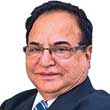
Dubai: The competition is getting fierce.
The Photoshopped version of your selfie that makes you look like a million bucks is locked in a race with the plastic surgeon’s scalpel to make his client reach a perfect match with that image.
And hereby hangs a tale that is being scripted by a rise in the numbers of young women in the UAE wanting to undergo cosmetic surgery so they can look better on social media.
“We are living the life of the image,” says Dr Michael Salivaras, aesthetic plastic surgeon, Clinica Joelle, Dubai.
“Everyone, mainly, is judged by their looks first and then the personality. Look at the devices that pride themselves on presenting a new you to you: they offer better quality/resolution of images, high-end editing applications and crystal clear screens with AI [artificial intelligence] apps. Look at the appeal of Snapchat and Instagram.”
Dr Salivaras says he can feel the heat of the competition.
“We [plastic surgeons] are competing with smart apps which edit the images. Imagine if a plastic surgeon can offer what Photoshop can do in two seconds? They would be billionaires for sure,” he says.

Social media is more a menace than a help to immature minds who have not developed decision-making skills.
Dr Ashok Govila, Dubai-based plastic and reconstructive surgeon, says: “Social media is more a menace than a help to immature minds who have not been much exposed to life and therefore, have not developed their decision-making skills."
Dr Govila added: “[The young] seem to have the desire to look better and look different without any clue as to how or what it means.”
Both experts say they are getting younger women wanting to change how they look.
“Lately, we have been seeing young women, even under 18, who visit us for procedures of any kind (body and face contouring).”
“Yes, the age bracket is getting younger, down to 18 yearsn,” says Dr Govila.
Most of the "flaws" arguably are in the eye of the selfie taker.
Shortcomings
Academic psychologists have found that the more people use social media sites, the more they ruminate about their own supposed shortcomings.
And a few preliminary studies have found that specifically posting self-portraits causes self-esteem to drop. “Everyone knows perfection exists only in images, not in real life,” says Dr Salivaras.
The problem with the selfie culture, say these experts, is that it is fundamentally askew. The photos that we take in the form of selfies are coded to be logically unflattering in many cases.

We are living the life of the image. Everyone, mainly, is judged by their looks first and then the personality.
“Mobile cameras are not SLR [cameras] and therefore are full of optical abrasions where parts are not proportional which is hardly understood by the masses,” says Dr Govila. “The objects/features near to the camera appear larger than those in the background. If the camera is kept close to the chin or the jaw, the jaw looms as the largest part of the face and the part of the face away from the lenses appears the smallest. The nose appears largest of all being closer to the lenses than other parts.”
A study published in Journal of American Medical Aassociation (JAMA) Facial Plastic Surgery last year found that selfies make noses look 30 per cent larger than they are. It is the kind of predicament that can vastly improve the statistics of rhinoplasty procedures.
True nature of images
“Images, as photographers will tell you, is a matter of light reflections,” says Dr Salivaras. “We can present the same person in multiple images in completely different ways based just on combination of light and shadow and reflections. So misleading can a photograph be.”
The reality of our face off camera, on the other hand, is a pure reality and that’s where the problems begin for many people, even the young. The selfie is replacing the realness, and if selfies don’t look good enough, well, it’s time to seek professional help.
“Due to bigger exposure in social media and social life, individuals are ‘obliged’ directly and indirectly, to pay attention to the details of the way they look,” adds Dr Salivaras.
He has had many clients who mention their unhapiness at their selfies.
“Sometimes you cannot even see the problem they are describing as it is obvious only in a specific selfie, at a particular angle of viewing, only in the morning,” he says. “So how are we as plastic surgeons supposed to treat something that we cannot see at the moment of the consultation? We are asked to offer a permanent solution which will give the same result [in the selfie] independent of the hour of the day, the light, make-up, shadows, the angle of viewing and worse, the emotional state of the patient.”
The big questions, says Dr Salivaras is, “Do we see [our clients] as patients or just customers looking for beautification services? Do we offer medical treatments or just beauty procedures? How and who will draw the line between selling a service and/or indicating a treatment? What is necessary and what is optional? Surely we are doctors and we have to consult them and identify the problem, if any.
“We have always to be true with our patients even if we are about to lose them or they go to another surgeon,” he says.








